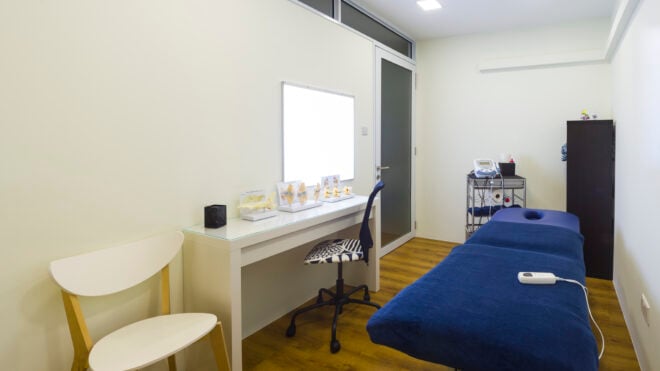A Brazilian woman is the new face of medical innovation after a horrific and painful accident left her desperate enough to try a stunning experimental treatment.
Maria Ines Candido da Silva, from the town of Russas in northern Brazil, was catastrophically burned in a gas explosion at the restaurant where she works as a server.
Her arms, legs, and chest were especially affected: she sustained massive second-degree burns that completely scorched away layers of skin.
Fortunately, Maria Ines was lucky to end up in the hands of a pioneering team of doctors, much like the young woman who had her leg put on backwards an an innovative cancer treatment.
Instead of relying on standard burn treatments that quickly heal the wounds but cause a lot of pain, the doctors had a different idea.
They created special burn dressings just for Maria Ines. Instead of the usual cream and bandages, they made hers out of pieces of fish skin.
Scroll through to learn about this fascinating — if slightly icky — treatment.
Some of the following images contain graphic content. Viewer discretion is advised.

Maria Ines Candido da Silva was working as a waitress in a restaurant in the Brazilian town of Russas when the unthinkable happened.
There was a gas explosion in the kitchen, and Maria Ines was caught in the blaze.
She was lucky to escape with her life, but she did not survive without scars.

The pretty woman, only 36 years old, will carry scars from the explosion for the rest of her life.
The flames scorched across her body, badly wounding her arms, legs, and chest.
One severe burn also stretched up across her collarbone and neck, spilling over onto the lower part of her face, including her lips.

Of course, when Maria Ines was first brought to the hospital, her doctors weren't ready to focus on the potential long-term effects of the burn.
That's because they were totally focused on helping the severe burns heal as quickly as possible.
Most of Maria Ines' burns were second degree, where the injuries has scorched through both the outer and the middle layers of the skin, leaving just the tender third layer.

Though second-degree burns aren't as severe as third-degree burns, they are often some of the most painful burns, because the skin's many nerve endings are left raw.
For Maria Ines, that meant that the recovery process was excruciating.
When she first arrived at the hospital, she was wrapped all over in classic burn dressings, which usually involve healing cream and gauze.

These kind of traditional treatments help the burn heal in about 14 days, though they cause excruciating pain.
In Maria Ines' case, the dressings had to be changed every day, and the wounds had to be washed out, which she described as extremely painful.
She told Caters News Agency, "When they put the creams into my wounds it was like I was being tortured, and the touch of the water to shower it off caused so much pain.”
That's when doctors suggested a pioneering alternative: fish skin.

It might sound gross, but dressings made out of the skins of tilapia fish are a groundbreaking new solution to helping burns heal.
Tilapia is a popular fish for eating, but the vast majority of skins are thrown out.
Maria Ines' doctors got the fish skins before they were discarded, and they put them through an extensive sanitization process to remove the fish smell.

After they're sterilized, the skins can be used as dressings for wounds and burns.
Because tilapia is loaded with collagen and is disease-resistant, the scales help encourage human skin to heal just as quickly as traditional burn cream, if not a tiny bit faster.
More importantly for someone in Maria Ines' position, the tilapia bandages are organic and mesh with the skin, meaning that they rarely need to be changed.

Eventually, the fish scales can be slathered with vaseline or something similar, and then gently lifted free of the tender new skin growing underneath.
While the skin might be a little sensitive during this process, the scales reduce the pain almost immediately, to the point that people using this therapy don't need to take painkillers.
Burn victims are usually on fairly heavy pain medication, so we wouldn't be surprised if fish "bandages" like these also help to reduce the number of people who get hooked on painkillers after an accident.

Meanwhile, Maria Ines will likely carry the scars of her experience for a very long time. However, her skin is already looking much healthier, thanks to the tilapia treatment.
She also adds that, though the scales made her look like she was in a "sci-fi movie," she “loved the treatment and would recommend it to anyone who has suffered like me."
If you are astounded by this medical leap, be sure to SHARE and encourage more medical professionals to try out this groundbreaking procedure!




